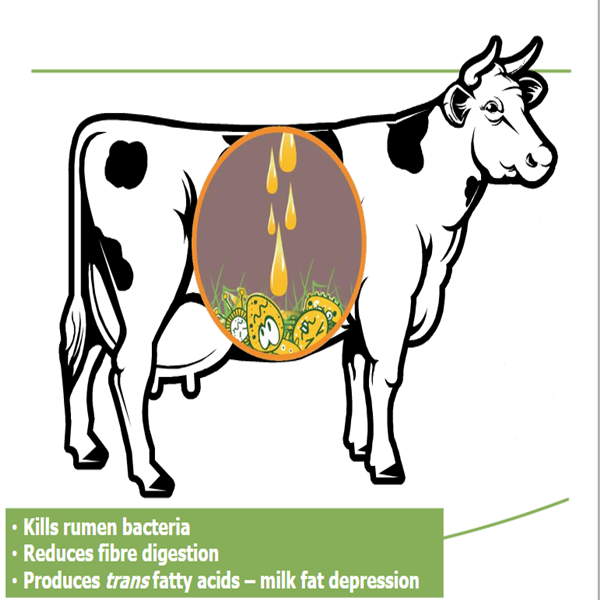Fat is one of the essential nutrients in diets and, like other nutrients such as protein, fibre, starch and sugar, must be balanced in a ration to ensure optimum performance.
What fats should you feed and how much do your dairy cows need? Puyer design and manufacture an extensive range of fat supplements for use in diets of both ruminant and monogastric animals.
Why feed fat to ruminants?
Fat is an essential nutrient and sufficient amounts must be supplied in the diet to meet animal requirements. However, fat is also a unique nutrient which offers benefits not available from other nutrient sources such as starch and fibre.
Energy supply
The primary reason for feeding fats is as an energy source. Fat has the highest energy of all the nutrients available, containing around 2.5-times the energy concentration of cereals.
When to feed fat – increased energy density
Fat can be fed at any time but is particularly valuable where the demand for energy is high.
In early lactation, dairy cows are unable to eat sufficient feed to meet the demands for milk production and therefore use their own body fat as an energy source, resulting in ‘negative energy balance’ and a loss of body condition (‘milking off their backs’). Fat is an ideal supplement at this stage as the high energy concentration supplies more energy in every bite of feed.
Sheep, goats and beef cattle also benefit from fat as a highly-concentrated form of energy particularly during lactation or the finishing beef phase.
In short,
Rumen protected fat - Fat and fatty acids are important nutrients in feed. Fat is generally regarded as a high-density energy substance, which can not only increase the energy concentration of the diet, but also has potential benefits in promoting the absorption of fat-soluble nutrients and reducing feed dust (NRC, 2001).
There are many studies on fat in the nutrition of adult dairy cows. Haseldon and other studies have found that fat and long-chain fatty acids have a certain regulatory effect on the fatty acid composition of ruminants, improving animal production performance and product quality.
Post time: Sep-27-2021

